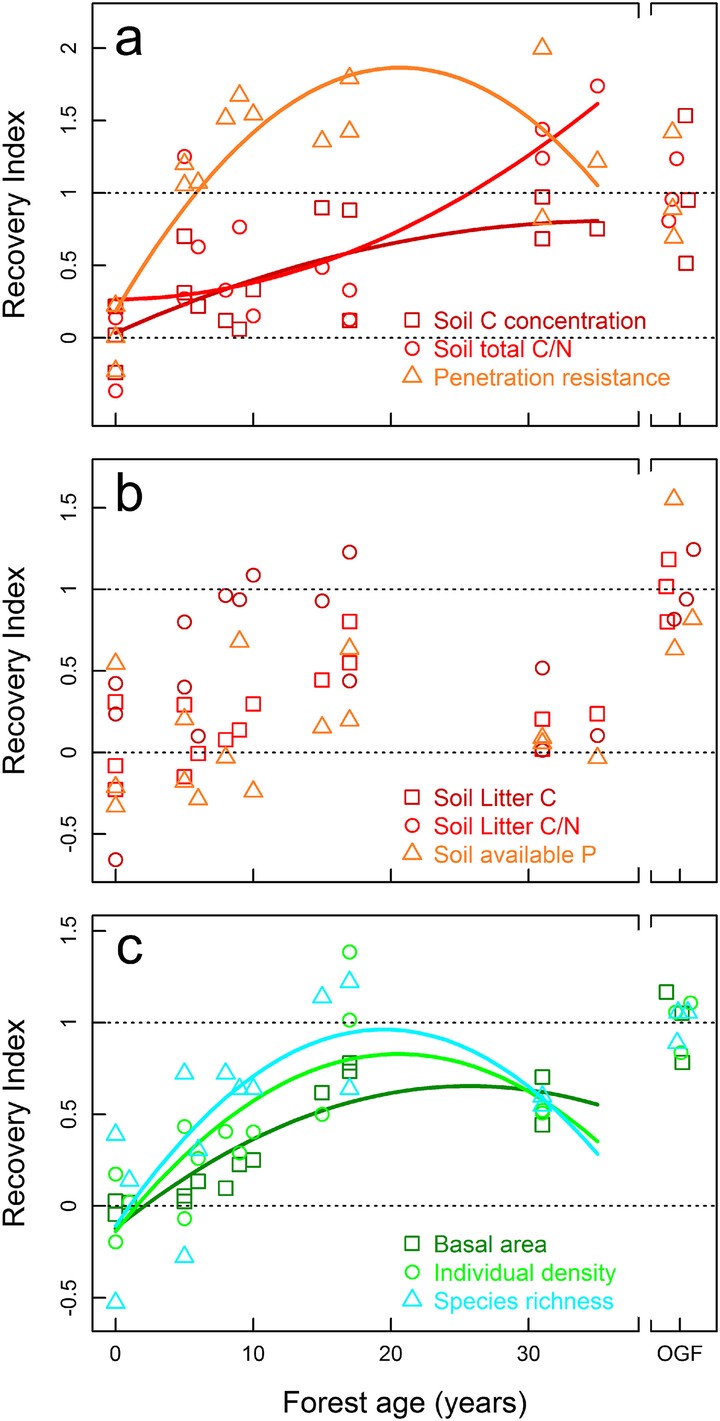Resilience of Soil Properties to Land‐Use Change in a Tropical Dry Forest Ecosystem

Abstract
Land‐use change in tropical dry forests can dramatically alter soil properties, but little is known about their resilience. We assessed soil resilience by examining resistance to, as well as recovery from, pasture use by smallholder farmers in western Mexico. We measured 25 soil and vegetation properties and compared old‐growth forest (OGF) sites and pastures to evaluate resistance to pasture use. We assessed whether those properties recovered to OGF reference values after pasture abandonment by analyzing the trajectories of properties along a chronosequence of secondary vegetation. Finally, we assessed whether recovery of soil properties could be inferred from the recovery of vegetation properties. Nine out of 25 properties differed significantly between the OGF sites and pastures. From these nine nonresistant properties, six (i.e., penetration resistance, soil C concentration, soil C/N, basal area, individual density, rarefied species richness of woody vegetation) showed recovery as a significant positive relationship with forest age. In contrast, surface litter C, litter C/N, and soil available P showed no resistance and no recovery within the successional period examined (up to 35 y). The best vegetation indicator for the recovery of some soil properties was woody species richness. This may suggest that functional differences of colonizing plants matter for recovery after pasture use. Our findings indicate that soil was overall resilient to pasture use, but some properties did not recover synchronously with vegetation properties during succession. Thus, more attention should be paid to soil function, because full ecosystem recovery is often inferred from the recovery of vegetation properties.